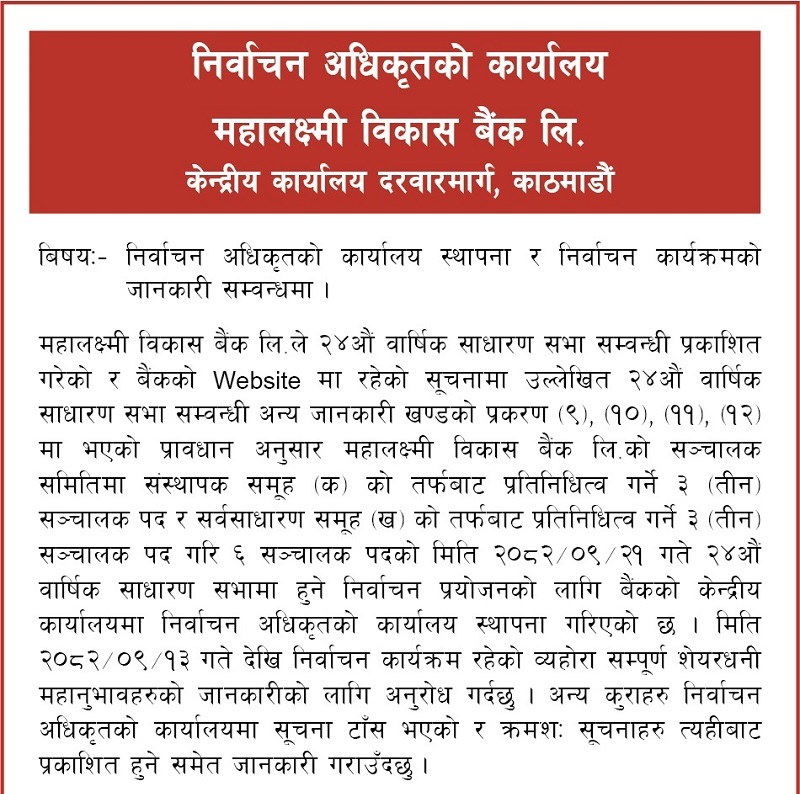Nepal Sambat: A Unique Cultural Heritage and National Pride Of Nepal
2nd November 2024, Kathmandu
Nepal Sambat holds a special place in Nepal’s history as the only calendar in the world named after a country, symbolizing Nepal’s independence, unity, and cultural pride. With a rich legacy dating back to 879 AD, Nepal Sambat is not just a calendar but a core part of Nepal’s identity, deeply integrated with the Newar community’s cultural practices, festivals, and rituals.
Nepal Sambat A Unique Cultural Heritage
Unlike the Gregorian, Shaka, and Bikram Sambat calendars, which are widely used, Nepal Sambat is unique in its historical connection to Nepal’s heritage, and it has recently regained attention as an official calendar alongside Vikram Sambat.
Historical Significance of Nepal Sambat
Nepal Sambat began during the reign of King Rāghavadeva and was widely used until the fall of the Malla dynasty in 1769 AD. This calendar is based on the lunisolar system and was used across the ancient Nepal Mandal region, which included present-day Kathmandu, Lalitpur, Bhaktapur, Banepa, and Dhulikhel. Coins, royal decrees, stone inscriptions, Hindu and Buddhist manuscripts, and legal documents from the Malla period all reference dates in Nepal Sambat, showcasing its integral role in historical records and daily life.
Legend of Sankhadhar Sakhwa
The origin of Nepal Sambat is intertwined with the folklore of Sankhadhar Sakhwa, a legendary merchant believed to have initiated the calendar to celebrate clearing the debts of the people of Nepal Valley. According to legend, Sankhadhar used gold, which he discovered in sand gathered from a sacred river, to pay off the debts of locals, marking the beginning of Nepal Sambat. This story reflects the calendar’s symbolic connection to generosity, unity, and liberation from financial burdens.
Calendar Replacements and Cultural Revival
Nepal Sambat was eventually replaced by the Shaka Sambat and later Vikram Sambat by the Shah and Rana regimes, marking shifts in Nepal’s official calendar. However, Nepal Sambat continued to be celebrated among the Newar community. In 1999, Sankhadhar Sakhwa was declared a national hero of Nepal, and by 2011, Nepal Sambat was reintroduced in official documents, reinstating it as an official calendar. This cultural revival underscores its significance, especially in preserving the Newar community’s cultural traditions and festivals, which are still observed according to Nepal Sambat dates.
Scientific Aspects of Nepal Sambat
Similar to the Gregorian calendar, which is based on solar months, Nepal Sambat incorporates scientific principles in its lunisolar structure. It has a leap year system, allowing it to align with the solar year, making it a practical and accurate calendar that reflects Nepal’s unique scientific heritage. Nepal Sambat has seen modern adaptations, including solar-based adjustments to better fit contemporary needs, showcasing its enduring relevance and adaptability.
Nepal Sambat in Modern Usage
Today, Nepal Sambat is recognized alongside Vikram Sambat in government documentation, making it a revived symbol of Nepalese pride and identity. Cities like Lalitpur Metropolitan City have started ascribing Nepal Sambat dates along with Vikram Sambat, and major newspapers now include Nepal Sambat dates on their mastheads. Celebrations of Nepal Sambat New Year have expanded beyond Kathmandu Valley, bringing national and international recognition to this ancient calendar.
Conclusion
Nepal Sambat is more than just a calendar; it represents Nepal’s cultural heritage, scientific understanding, and national pride. Its journey from historical significance to cultural suppression and modern revival exemplifies the resilience of Nepal’s traditions. As a reflection of Nepal’s unique identity and heritage, Nepal Sambat remains deeply cherished by the people of Nepal, especially within the Newar community. By embracing Nepal Sambat, Nepal acknowledges the rich diversity and cultural depth that define the nation.
For more: Nepal Sambat A Unique Cultural Heritage








